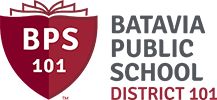6:235-AP1 Acceptable Use of Electronic Networks
6:235-AP1 Acceptable Use of Electronic Networks
All use of the District’s electronic networks shall be consistent with the District’s goal of promoting educational excellence by facilitating resource sharing, innovation, and communication. These procedures do not attempt to state all required or prohibited behavior by users. However, some specific examples are provided. The failure of any user to follow these procedures will result in the loss of privileges, disciplinary action, and/or legal action.
Terms and Conditions
The term electronic networks includes all of the District’s technology resources, including, but not limited to:
- The District’s local-area and wide-area networks, including wireless networks (Wi-Fi), District-provided Wi-Fi hotspots, and any District servers or other networking infrastructure;
- Access to the Internet or other online resources via the District’s networking infrastructure or to any District-issued online account from any computer or device, regardless of location;
- District-owned and District-issued computers, laptops, tablets, phones, or similar devices.
Acceptable Use – Access to the District’s electronic networks must be: (a) for the purpose of education or research, and be consistent with the District’s educational objectives, or (b) for legitimate business use.
Privileges – Use of the District’s electronic networks is a privilege, not a right, and inappropriate use may result in a cancellation of those privileges, disciplinary action, and/or appropriate legal action. The system administrator or Building Principal will make all decisions regarding whether or not a user has violated these procedures and may deny, revoke, or suspend access at any time. His or her decision is final.
Unacceptable Use – The user is responsible for his or her actions and activities involving the electronic networks. Some examples of unacceptable uses are:
- Using the electronic networks for any illegal activity, including violation of copyright or other intellectual property rights or contracts, or transmitting any material in violation of any State or federal law;
- Using the electronic networks to engage in conduct prohibited by board policy;
- Unauthorized downloading of software or other files, regardless of whether it is copyrighted or scanned for malware;
- Unauthorized use of personal removable media devices (such as flash or thumb drives);
- Downloading of copyrighted material for other than personal use;
- Using the electronic networks for private financial or commercial gain;
- Wastefully using resources, such as file space;
- Hacking or attempting to hack or gain unauthorized access to files, accounts, resources, or entities by any means;
- Invading the privacy of individuals, including the unauthorized disclosure, dissemination, and use of information about anyone that is of a personal nature, such as a photograph or video;
- Using another user’s account or password;
- Disclosing any network or account password (including your own) to any other person, unless requested by the system administrator;
- Posting or sending material authored or created by another without his/her consent;
- Posting or sending anonymous messages;
- Creating or forwarding chain letters, spam, or other unsolicited messages;
- Using the electronic networks for commercial or private advertising;
- Accessing, sending, posting, publishing, or displaying any abusive, obscene, profane, sexual, threatening, harassing, illegal, or knowingly false material;
- Misrepresenting the user’s identity or the identity of others; and
- Using the electronic networks while access privileges are suspended or revoked.
Network Etiquette – The user is expected to abide by the generally accepted rules of network etiquette. These include, but are not limited to, the following:
- Be polite. Do not become abusive in messages to others.
- Use appropriate language. Do not swear, or use vulgarities or any other inappropriate language.
- Do not reveal personal information, including the addresses or telephone numbers, of students or colleagues.
- Recognize that the District’s electronic networks are not private. People who operate District technology have access to all email and other data. Messages or other evidence relating to or in support of illegal activities may be reported to the authorities.
- Do not use the networks in any way that would disrupt its use by other users.
- Consider all communications and information accessible via the electronic networks to be private property.
No Warranties – The District makes no warranties of any kind, whether expressed or implied, for the service it is providing. The District will not be responsible for any damages the user suffers. This includes loss of data resulting from delays, non-deliveries, missed-deliveries, or service interruptions
caused by its negligence or the user’s errors or omissions. Use of any information obtained via the Internet is at the user’s own risk. The District specifically denies any responsibility for the accuracy or quality of information obtained through its services.
Indemnification – By using the District’s electronic networks, the user agrees to indemnify the District for any losses, costs, or damages, including reasonable attorney fees, incurred by the District relating to, or arising out of, any violation of these procedures.
Security – Network security is a high priority. If the user can identify or suspects a security problem on the network, the user must promptly notify the system administrator or Building Principal. Do not demonstrate the problem to other users. Keep user account(s) and password(s) confidential. Do not use another individual’s account without written permission from that individual. Attempts to log-on to the network as a system administrator will result in cancellation of user privileges. Any user identified as a security risk may be denied access to the networks.
Vandalism – Vandalism will result in cancellation of privileges and other disciplinary action. Vandalism is defined as any malicious attempt to harm or destroy data of another user, the Internet, or any other network. This includes, but is not limited to, the uploading or creation of malware, such as viruses and spyware.
Telephone Charges – The District assumes no responsibility for any unauthorized charges or fees, including telephone charges, texting or data use charges, long-distance charges, per-minute surcharges, and/or equipment or line costs.
Copyright Web Publishing Rules – Copyright law and District policy prohibit the re-publishing of text or graphics found on the Internet or on District websites or file servers/cloud storage without explicit written permission.
- For each re-publication (on a website or file server) of a graphic or a text file that was produced externally, there must be a notice at the bottom of the page crediting the original producer and noting how and when permission was granted. If possible, the notice should also include the web address of the original source.
- Students and staff engaged in producing web pages must provide library media specialists with email or hard copy permissions before the web pages are published. Printed evidence of the status of public domain documents must be provided.
- The absence of a copyright notice may not be interpreted as permission to copy the materials. Only the copyright owner may provide the permission. The manager of the website displaying the material may not be considered a source of permission.
- The fair use rules governing student reports in classrooms are less stringent and permit limited use of graphics and text.
- Student work may only be published if there is written permission from both the parent/guardian and student.
Use of Email – The District’s email system, and its constituent software, hardware, and data files, are owned and controlled by the District. The District provides email to aid students and staff members in fulfilling their duties and responsibilities, and as an education tool.
- The District reserves the right to access and disclose the contents of any account on its system, without prior notice or permission from the account’s user. Unauthorized access by any student or staff member to an email account is strictly prohibited.
- Each person should use the same degree of care in drafting an email message as would be put into a written memorandum or document. Nothing should be transmitted in an email message that would be inappropriate in a letter or memorandum.
- Electronic messages transmitted via the District’s Internet gateway carry with them an identification of the user’s Internet domain. This domain is a registered name and identifies the author as being with the District. Great care should be taken, therefore, in the composition of such messages and how such messages might reflect on the name and reputation of the District. Users will be held personally responsible for the content of any and all email messages transmitted to external recipients.
- Any message received from an unknown sender via the Internet, such as spam or potential phishing emails, should either be immediately deleted or forwarded to the system administrator. Downloading any file attached to any Internet-based message is prohibited unless the user is certain of that message’s authenticity and the nature of the file so transmitted.
- Use of the District’s email system constitutes consent to these regulations.
Internet Safety
Internet access is limited to only those acceptable uses as detailed in these procedures. Internet safety is supported if users will not engage in unacceptable uses, as detailed in these procedures, and otherwise follow these procedures.
Staff members shall supervise students while students are using District Internet access to ensure that the students abide by the Terms and Conditions for Internet access contained in these procedures.
Each District computer with Internet access has a filtering device that blocks entry to visual depictions that are: (1) obscene, (2) pornographic, or (3) harmful or inappropriate for students, as defined by the Children’s Internet Protection Act and as determined by the Superintendent or designee.
The system administrator and Building Principals shall monitor student Internet access.
Legal Reference(s):
20 U.S.C. §7131, Elementary and Secondary Education Act.
47 U.S.C. §254(h) and (l), Children’s Internet Protection Act.
720 ILCS 135/, Harassing and Obscene Communications Act.
Date Adopted: April 10, 2007
Date Amended: August 24, 2021



